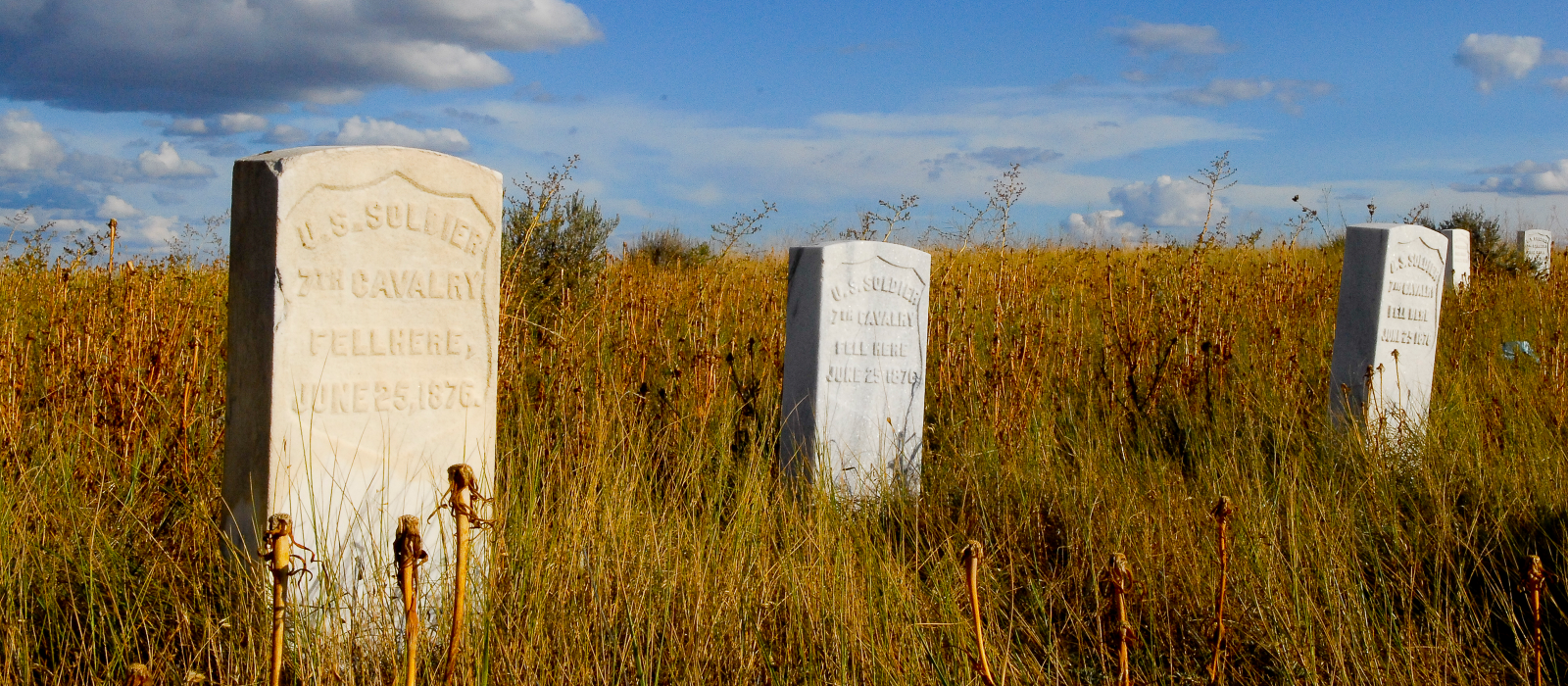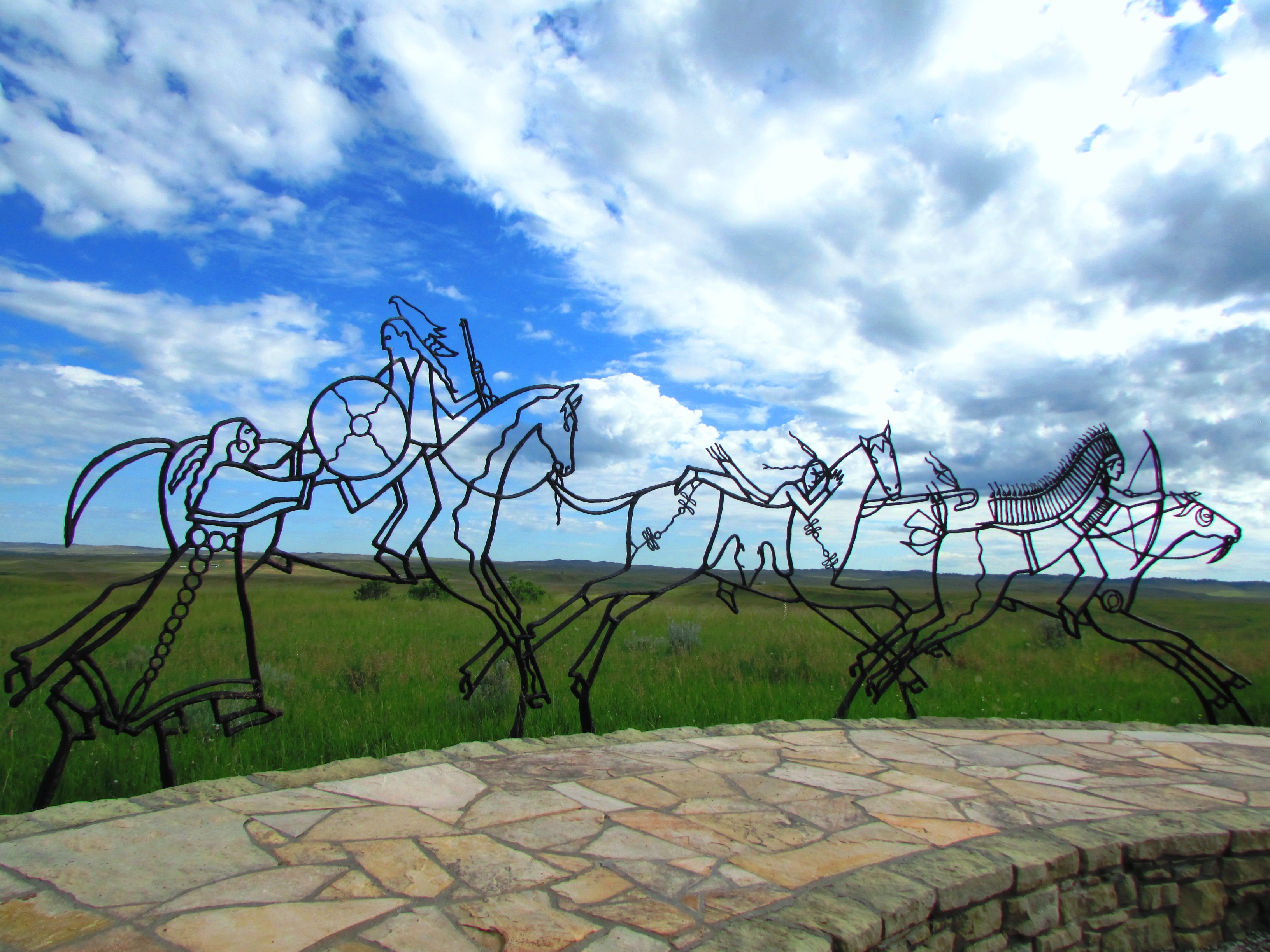One of the most significant Western frontier battles in American history was the 7th Cavalry’s crushing defeat of 12 companies by Plains Indians at the Battle of the Little Bighorn.
At Little Bighorn National Monument, which is located 104 kilometers northwest of Billings in the vicinity of Crow Agency, Montana, the two-day battle is remembered.
The controversial Army commander Lt. Col. George Armstrong Custer and his soldiers were dispatched by the US government in June 1876 to appease Sioux and Cheyenne Indians who had fled the reservation where they had been forcibly relocated. The Battle of the Little Bighorn, sometimes known as “Custer’s Last Stand,” came to represent decades of Native American attempts to protect and defend their lands and way of life against Euro-American settlers. Visitors can now have a tour of the exact grounds where this pivotal moment in the conflict occurred.
What’s Visible
Adjacent to the museum and tourist center are the white tombstones of Custer National Cemetery. Visit the graves of over 4,000 men and women who lost their lives in the Korean and Vietnam Wars, the Battle of the Little Bighorn, and both world wars.
The focal point of Little Bighorn is Last Stand Hill, where the main fighting took place. From here, tourists may see the small, uneven tombstones and markers that indicate the locations of Custer’s forces’ falls and burials. Custer’s remains, which were later removed from their grave, are currently interred in West Point Cemetery in Highlands, New York.
The Little Bighorn fight is remembered at the “Peace Through Unity” memorial.
Seek out the memorial to the 263 soldiers and supporting personnel who lost their lives in the conflict, the 7th U.S. Cavalry Memorial, a soaring stone monolith constructed in 1881. The gloomy “Peace Through Unity” Indian Memorial nearby honors the Native American warriors and tribal women who fought in the conflict with metal casts of “Spirit Warriors.” Native Americans fought for decades for the national monument to acknowledge their experience. The Indian Memorial was unveiled in 2003. It is estimated that sixty Native Americans lost their lives in the conflict, however the precise number is unknown.
You can learn about the battle and the Plains Indians through exhibits at the visitor center and museum.
The Bighorn River cuts through the area, providing opportunities for outdoors adventure.
How to Proceed
To find out more about the history of the fight, the weapons of the time, Custer’s life, and the Plains Indians, attend the 20-minute ranger talk in the visitor center and peruse the museum’s exhibits. Proceed to drive the 7-kilometer route that links Reno-Benteen Battlefield, the site of some of the conflict, with Last Stand Hill. You have two options for exploring the area: you can go on a self-guided tour or buy an audio guide that highlights key locations.
Near the Battlefield
Gape in Bighorn Canyon National Recreation Area, located 93 kilometers west of the monument, at the spectacular, winding canyon walls carved by the Bighorn River. In addition to encompassing wetlands, valleys, prairies, and mountains, the 48,500-hectare leisure area has a lake and more than 43 kilometers of hiking routes. Bighorn Canyon and Little Bighorn Battlefield are located on the Crow Indian Reservation. The Crow Fair Powwow & Parade Celebration is held annually in August on the reserve. Highlights include horse racing, a parade, an Indian rodeo, and traditional Crow singing and dancing.
Where to Sleep and Eat
Though there are food concessions at the monument, there is a “trading post” just outside the gate. Avoid arriving at the monument hungry. Hardin, Montana, 19 kilometers north of the monument, has inexpensive chain hotels and fast-food restaurants; but, for a wider selection, head to Billings or Sheridan, Wyoming, 120 kilometers south, for more options.



